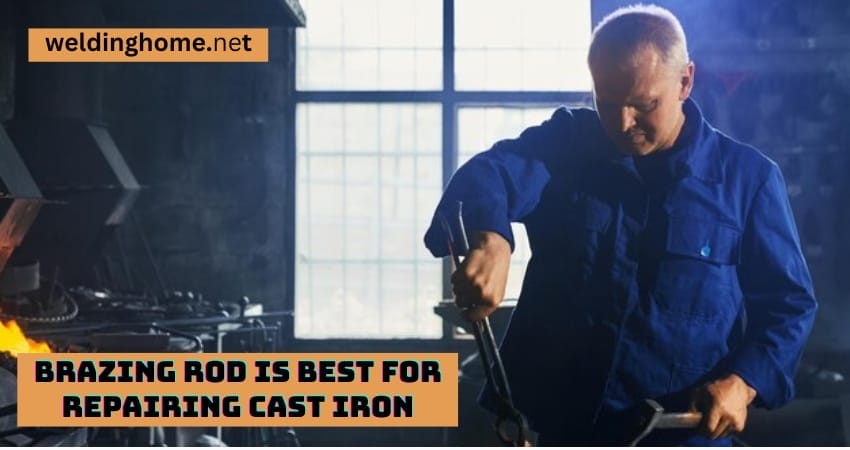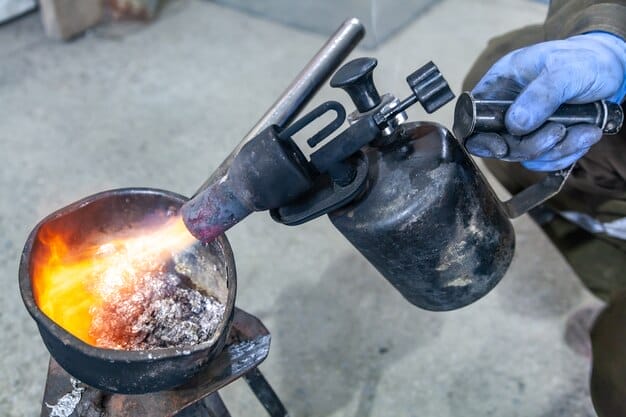What type of brazing rod is best for repairing cast iron step by step Guide 2024

With the finest brazing rod for repairs, confidently bring your cast iron treasures back to life. In this comprehensive guide for What type of brazing rod is best for repairing cast iron Guide 2024, we reveal the techniques for expertly repairing cast iron. Choosing the appropriate rod material and perfecting the technique of regulated heating are just a few of the expertise this guide will teach you to handle cast iron repairs gracefully. Discover the possibilities of brazing as you set out to restore your beloved cast iron objects, guaranteeing their lifetime and retaining their allure.
Understanding the brazing rod is best for repairing cast iron Beast.
Let’s first examine the special qualities of cast iron before delving into the flaming realm of brazing. This material is robust yet brittle due to its high carbon content. Selecting the incorrect brazing rod might result in shoddy fixes or even more harm.
Discover the beast within each rod and choose the best option for skillfully recovering cast iron. This tutorial will demystify the complexities required in a brazing rod is best for repairing cast iron restoration like a real craftsman by dissecting the subtleties of choosing the ideal brazing rod. This investigation into the world of brazing rods, from identifying rod materials to grasping the precise processes, is your key to overcoming the difficulties associated with cast iron restoration. Give yourself the tools necessary to complete the job, and turn your brazing rod is best for repairing cast iron repair into a monstrous success.
Common Brazing Rod Options for Cast Iron

1. Bronze:
- The most common option for brazing rod that is best for repairing cast iron iron is bronze rods since they are very flexible, strong, and corrosion-resistant. There are several varieties, each with a unique melting point and set of characteristics.
2. Nickel:
- Nickel is a multipurpose metal that is well-known for both its conductivity and resistance to corrosion. From industrial applications to alloy forms, it demonstrates its versatility and toughness. Examine the qualities and uses of nickel, a notable metal for its distinct attributes and broad applicability.”
3. Silver:
- Silver’s ageless beauty and adaptability, a brilliant precious metal, have enthralled civilizations throughout history. Silver, known for its conductivity and reflective qualities, is used in jewellery, electronics, and photography. Explore the realm of silver, where its visual appeal coexists with its historical importance and antibacterial qualities. Silver has a particular place in our hearts and in many businesses, regardless of whether it is valued for its inherent worth, practical industrial use, or decorative appeal.
4. Flux-coated Rods:
- Welding electrodes with a unique coating intended to improve the welding process are called flux-coated rods. These rods are essential to shielded metal arc welding (SMAW) because they provide a barrier that keeps impurities from the atmosphere from reaching the molten weld pool. In addition to contributing alloying components to the weld and enabling the removal of impurities, the flux layer performs other functions.
Choosing the Champion: Factors to Consider

When selecting a brazing rod for the brazing rod is best for repairing cast iron, consider these crucial factors:
- Strength: Select a solid rod to endure the strain and stress it will experience throughout your repair.
- Temperature: Ensure your apparatus can achieve the necessary temperature and consider the rod’s melting point.
- Ductility: Select a rod with high elasticity for repairs that call for flexibility or vibration resistance.
- Corrosion resistance: Choose a rod with excellent corrosion resistance if your repair will be exposed to chemicals or moisture.
- Cost: Weigh the advantages and performance of various rods against your budget.
Expert Tips for a Flawless Brazing

- Clean the area thoroughly:
- Clean the brazing area of debris, grease, and paint for best adherence.
- Preheat the cast iron to guarantee complete brazing rod and base metal fusion.
- Select the appropriate flux: For a neat and durable bond, use a flux designed especially for brazing rod, which is best for repairing cast iron.
- Distribute the heat evenly: Steer clear of overheating, which might harm the nearby metal.
Beyond the Rod: Essential Brazing Equipment
To braze your brazing rod is best for repairing brazing rod is best for repairing cast iron like a pro, you’ll need the right tools:
- Torch: Choose a torch that delivers heat for the chosen rod, and the brazing rod is best for repairing cast iron thickness.
- Flux: Opt for a flux suitable for brazing rod is best for repairing cast iron and is compatible with your chosen rod.
- Wire brush: Clean the brazing area before and after brazing.
- Safety glasses and gloves: Protect yourself from sparks and molten metal.
Conclusion: Brazing Your Way to Victory

You can master the art of brazing rods, which is best for repairing cast iron with the tools and information. You can maintain your automotive warrior blazing down the road and restore your cast iron components to their former glory by carefully selecting the appropriate brazing rod for your particular demands and paying attention to the professional advice. Brazing warriors, now go forth and confidently fix those cast iron flaws!
FAQs
Can I use the same brazing rod for cast iron and other metals?
It’s best to use a brazing rod designed for cast iron repair. While some rods may work on other metals, they may not provide the optimal strength and performance for cast iron repairs.
Should I preheat the cast iron for all brazing jobs?
Preheating is generally recommended for most brazing rod is best for repairing cast iron applications. It helps ensure better penetration of the molten brazing rod and creates a stronger bond. However, some specific rods and brazing rod is best for repairing cast iron techniques that may not require preheating.
What are some common mistakes to avoid when brazing cast iron?
- Using the wrong type of brazing rod or flux
- Insufficient cleaning of the brazing area
- Overheating the cast iron
- Applying stress to the brazed joint before it has cooled completely




